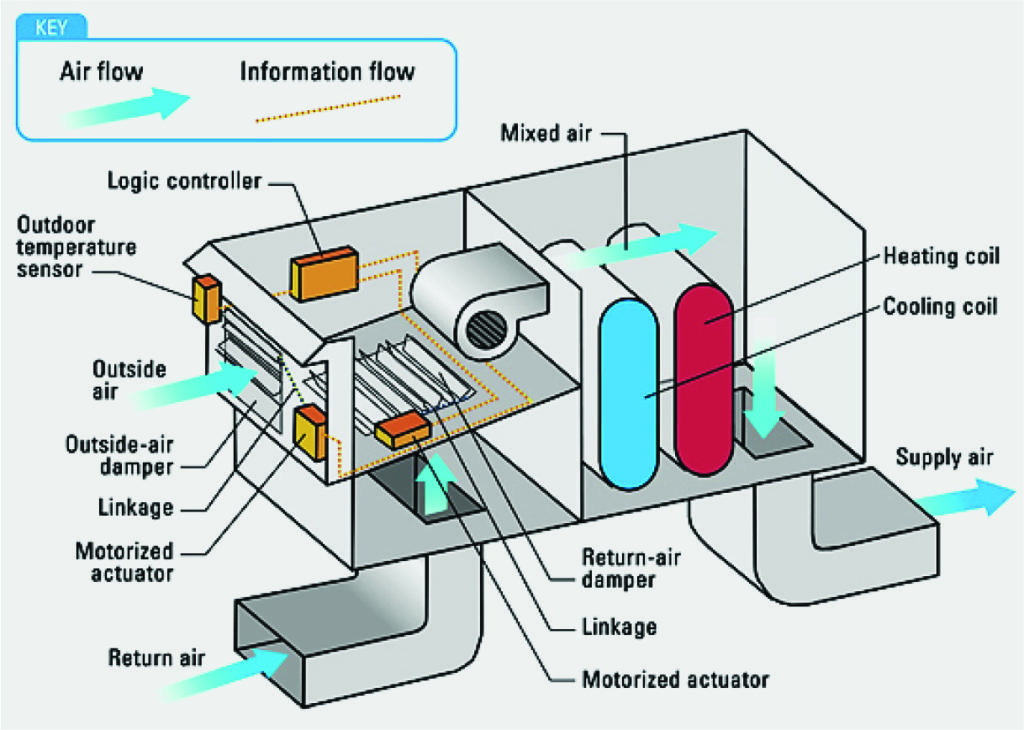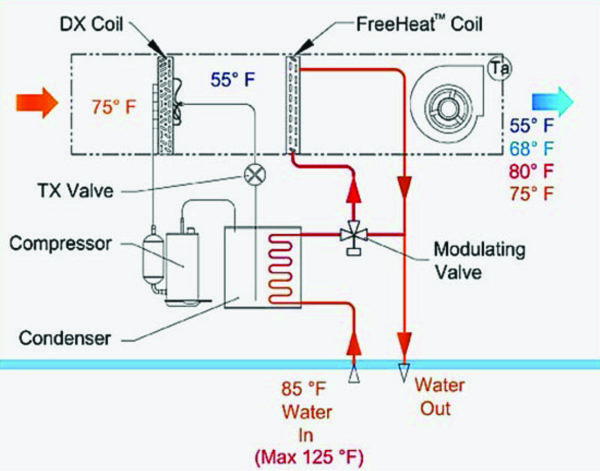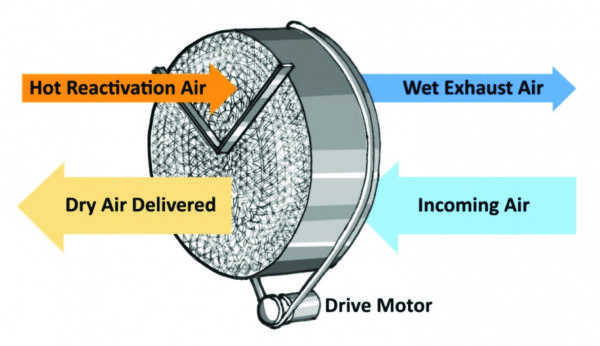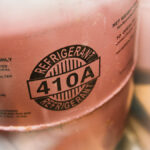HVAC Energy Efficiency in Industrial Applications
Several industrial HVAC requirements differ from commercial buildings and are not often considered in terms of energy efficiency. Heating, ventilation, and air conditioning (HVAC) is a major energy consumer in commercial buildings and energy efficiency measures have been developed in this field. Industrial facilities, however, have special requirements which are more complex and require customized solutions.
In addition to general air quality, air of defined quality may be required for specific processes within the production area or factory. Industrial premises can be divided into offices and administration, production areas and storage, and warehousing areas. Offices and warehousing areas which do not require extremely accurate temperature and humidity control will use standard systems beyond the scope of this article. The production area will, however, have a set of requirements which vary with the industry and the specific site, and energy savings must be tailored to suit each application.
Some specifics to manufacturing areas may be:
* High heat load due to the machinery in use
* Air quality problems due to the materials being used in the process
(paint bays, grinding, sanding, welding, cutting, powders, dry
materials, and others)
* Accurate control of temperature and humidity in specific
manufacturing areas (clean room requirements)
* Explosion-proof environments
All of these requirements can exist in a single facility and the energy account must take them all into account if the overall design is to achieve the desired result. Manufacturing and industrial facilities tackle a varying load of heavy-duty projects during their day-to-day operations so that HVAC system designers face a number of challenges to achieve sustainable, energy-efficient solutions.
A manufacturing or industrial facility will typically have a large outside-air requirement to offset the various air, heat, and pollution loads throughout a plant. Innovative ways to provide energy savings and energy recovery in these systems are required and the control systems must function optimally.
Industrial environments have a wide range of HVAC requirements. Where commercial and retail facilities are focused on comfort cooling, an industrial facility may need explosion-proof ventilation in one area and a clean-room environment in another. Process air streams may require large volumes of outside air and use specialized systems to clean the air. All of this may require ancillary air handling and conditioning systems over and above the facility plant but still require a supply of quality air intake to function properly.
In addition, although the air circulation systems may be simpler than for commercial buildings because of the larger open spaces involved, the volumes of air and the tightness of controls make energy savings more complicated.
Fresh Air Intake, Air Circulation Rates
Facilities require a higher circulation rate and a higher fresh air intake than commercial buildings. The heat load ensures that the main requirement will be for cooling of ambient air rather than heating, irrespective of the season, and this provides an opportunity to combine economizer cycles and the use of free cooling in the fresh air intake. Control of air flow and air changes depending on conditions offer the first savings opportunity.
Free Cooling
The heat load in an industrial facility can necessitate constant cooling, not only for human comfort but also to ensure that the equipment does not exceed specified operating temperature limits. This is particularly important in facilities with large quantities of computer or ICT equipment, such as data centers or telecommunications installations.
In such instances, energy can be saved by using the lower temperature of outside air (or the lower heat content) to supplement the air processing units. Economizers may operate simply on the outside air temperature or on outside air enthalpy, which is a measure of the heat content of air and depends on both temperature and relative humidity.
Instead of operating on a fixed minimum airflow supply, an economizer allows the HVAC system to use outside air by varying the supply airflow according to outside air conditions, usually by means of an outdoor dry bulb temperature sensor on return air enthalpy.
Enthalpy is a more efficient metric because it is based on the true heat content of the air. Although economizers and free cooling are used mainly for ITC and data centers at the moment, the range of equipment available makes their use ever more attractive for industrial and other high-heat load density applications. Economizers take two main forms: direct and indirect cooling.
Direct Cycle
In the direct cycle, outside air is used directly to cool the inside of the building. These are two possibilities:
* Once-through cooling – Outside air is filtered and passed through the
facility once. Hot air is vented at the opposite side of the building. This
system may incorporate a direct expansion chiller in the air path to
cater for occasions when the outside air temperature is too high to
provide the full cooling load. This application is commonly used in
data centers where heat density can reach up to ten times that of
commercial buildings. Temperature is controlled by the rate of air
flow through the facility. Variable speed drive (VSD) fans provide extra
energy savings and allow a more accurate control of temperature.
* Make-up air system – Outside air is filtered and combined with
return air from inside the building in a proportion depending on the
relative temperature or relative enthalpy of the outside and inside air.
Mixing of air is regulated by dampers which control the air flow into
the building (see Fig. 1).

Indirect Cycle
In the indirect cycle, outside air cools the chilled water used in a conventional system. Several configurations are possible:
* Precooling – The return chilled water is passed through a heat
exchanger where it is precooled on its way to the evaporator. Outside
air cools the heat exchanger.
* Separate cooling loop – Outside air is used to cool water passing
through a heat exchanger in the return water loop. There is no contact
between the outside air cooling loop and the internal chilled water
loop.
The heat exchanger usually takes the form of a conventional cooling tower.
Humidity Control
Humidity control systems add or remove water vapor from indoor air to stay within required humidity ranges. Humidity control is usually associated with thermal comfort for workers, but it also has a large effect on electronic and electrical equipment. Humidity levels can also affect product quality in the pharmaceutical or food processing industries. With automation increasing in industry, humidity control is becoming ever more important. Excess moisture in a building can lead to mold and mildew, causing problems for indoor air quality (IAQ) and affecting the operation of equipment.
Humidity control is a large energy user. Although humidification does not consume much energy, dehumidification alone can can constitute a quarter to a third of cooling energy in humid climates or seasons.
Mechanical Dehumidification
Typical dehumidification is performed by systems which use the same basic mechanics as air conditioners. They are electrical heat pumps that dehumidify air by cooling it. Mechanical dehumidification is not the most energy-effective means, but it is the most common because it uses standard technology. Mechanical dehumidifiers over-cool incoming air to below the dew-point. As a result, the water condenses on the cooling coils. Afterwards, the cold, dry air is heated to the desired temperature again and/or mixed with untreated air to provide air at the desired temperature and humidity levels. The water, now in droplets, drips off the condenser coils so that more water vapor can condense there.
Waste Heat Dehumidification
Any energy savings plan starts with reducing the reheat process. The reheat process can consume the bulk of the energy used in the dehumidifier. Electrical heater elements were originally used for the reheat process. The first step is to substitute this energy-hungry source with another source of heat, preferably from a heat recovery system. The most obvious source here is the condenser coils of the cooling system. Where this source may not provide sufficient heat, recovered heat from other processes in the building can be used.
The dehumidification process is often applied to the fresh air intake only, and waste heat from the main air conditioning plant may be available. Heat pumps forming part of the total installation can be used for this purpose. Fig. 2 shows the diagram of a hybrid dehumidifier system which uses heat from the unit condenser to reheat the air.

The load can be quite considerable where the whole plant is subject to humidity control. The actual load will depend on the difference between the temperature of the return air and the required exit temperature of the processed air.
Desiccant Dehumidifiers
Desiccant dehumidifiers use a rotating wheel containing a re-generable desiccant to remove moisture from the air (see Fig. 3). Incoming air is passed through the wheel where the moisture is absorbed. Hot air is passed through the upper section as the wheel rotates and removes the water. Hot air containing water is exhausted.
The heat may be derived from electrical heaters or from a waste-heat source such as the condenser of the main air processing unit or other industrial processes.
These dehumidifiers are used for primary dehumidification, as well as for dedicated process air plants.

Hunton Services is your trusted partner for industrial HVAC services. Let us help you optimize the efficiency of your plant/facility.
Call 713-63-8336 or send us a message to find out more!







No comments yet